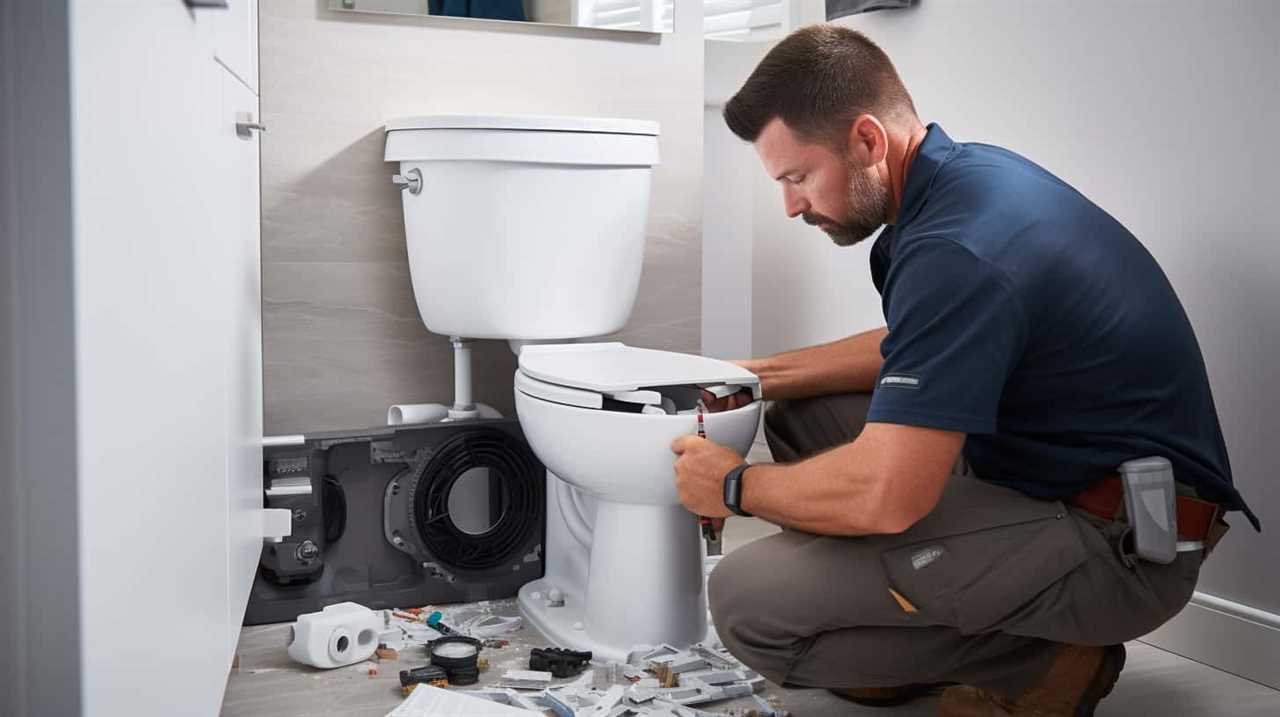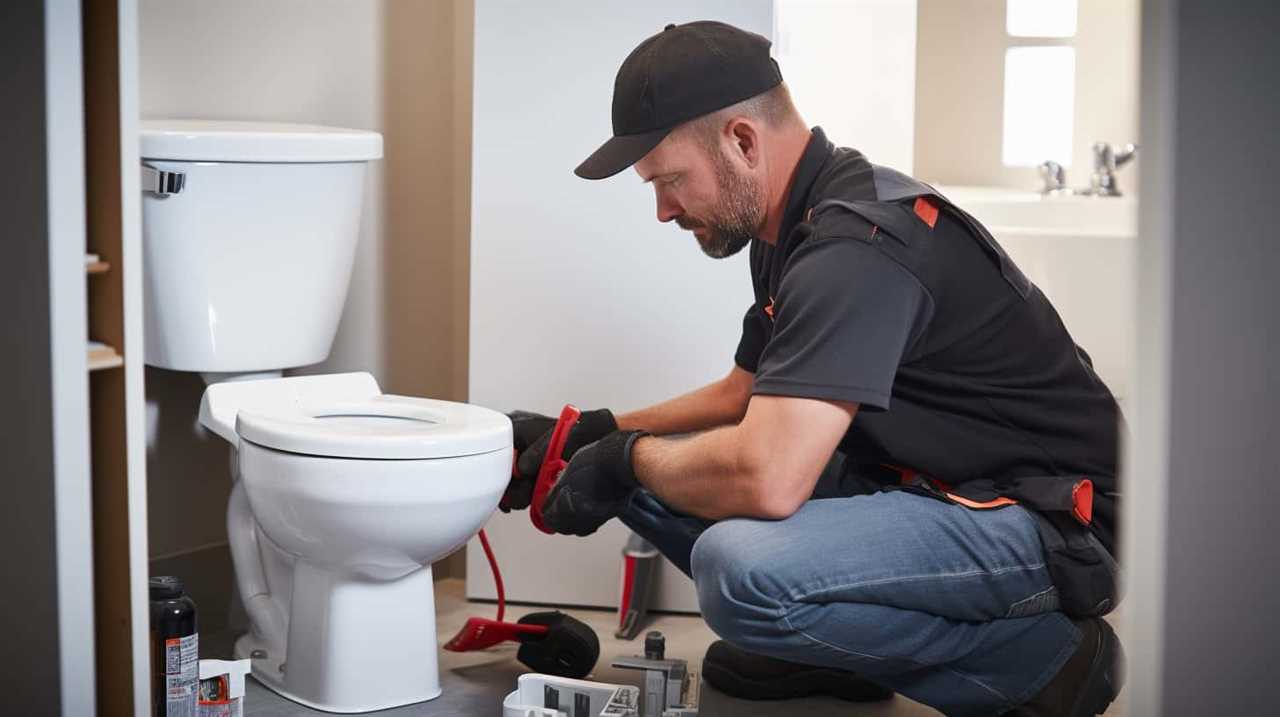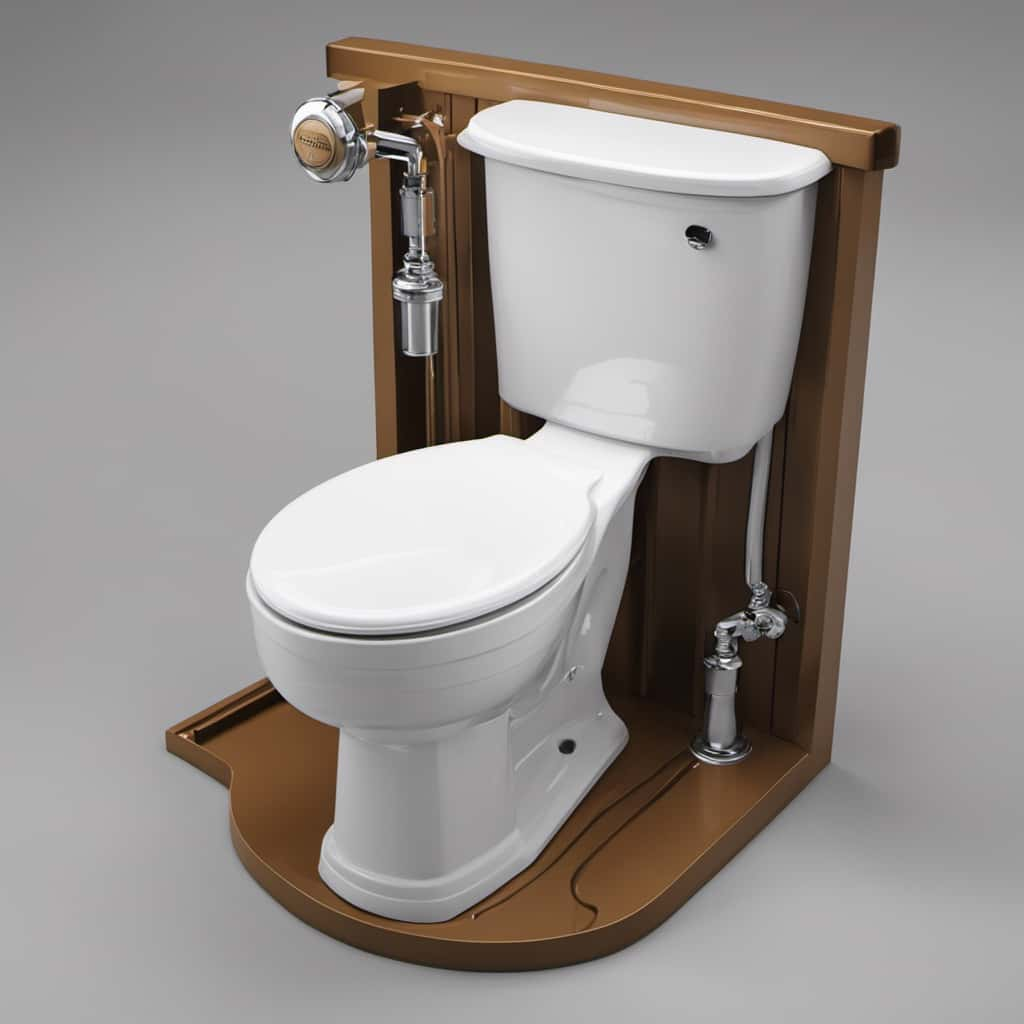Ever thought about how a single push of a lever can magically make waste vanish? This article explores the intriguing physics behind the flushing of toilets.
We’ll explore the role of gravity, pressure, and fluid dynamics in this everyday phenomenon. Discover the syphon effect, flushing mechanisms, and how design impacts water conservation and efficiency.
Prepare to master the science of toilet flushing and gain a whole new appreciation for this essential part of our lives.
Key Takeaways
- Gravity plays a crucial role in allowing water to flow downward and create the necessary force for waste removal in toilet flushes.
- Bernoulli’s principle is applied in toilet flushes to create low pressure and high-speed flow of water, resulting in the removal of waste from the bowl.
- The syphon effect, created by the hydraulic loop of water flow, ensures rapid and forceful water flow, effectively flushing away waste.
- Different flushing mechanisms and design elements, such as gravity-fed toilets and pressure-assisted toilets, as well as the shape, size, and water jet position of the toilet bowl, contribute to efficient waste removal and prevent clogs.
The Role of Gravity
The role of gravity in toilet flushes is crucial as it’s what allows the water to flow downward and create the necessary force to remove waste from the bowl. When the flush handle is activated, the water in the tank is released into the bowl. As the water flows down, it displaces the air in the bowl, creating buoyancy and fluid displacement. This displacement causes the waste to rise and be carried away by the flowing water.

Additionally, the force of gravity aids in the formation of a vortex in the water, which further enhances the removal of waste. The centrifugal force generated by the vortex helps to push the waste towards the drain. Understanding the role of gravity in toilet flushes is essential to grasp the underlying physics of this everyday phenomenon.
Now, let’s delve into the next section about ‘pressure and fluid dynamics’.
Pressure and Fluid Dynamics
Now let’s explore how pressure and fluid dynamics play a crucial role in the physics behind toilet flushes.
Two key concepts that are relevant in this context are Bernoulli’s principle and viscosity. Bernoulli’s principle states that as the speed of a fluid increases, its pressure decreases, and vice versa. This principle is applied in toilet flushes to create the necessary force to remove waste efficiently.

The flushing mechanism creates a high-speed flow of water, resulting in low pressure that effectively pulls waste from the bowl. Viscosity, on the other hand, refers to the resistance of a fluid to flow. A lower viscosity allows for better flow, ensuring that waste is carried away smoothly.
Understanding the principles of pressure and fluid dynamics helps us comprehend the effectiveness of toilet flushes.
In the next section, we’ll delve into another essential aspect of the physics behind toilet flushes: the syphon effect.
The Syphon Effect
To understand the physics behind toilet flushes, let’s explore the role of the syphon effect. The syphon effect is a crucial component of the flushing mechanism and is responsible for the efficient removal of waste from the toilet bowl.

Here are some key points to help you understand the syphon effect:
- The syphon effect relies on a hydraulic loop, which is created when water flows from the toilet tank into the bowl and then out through the drain.
- This hydraulic loop creates a pressure difference that allows water to flow rapidly and forcefully through the system, effectively flushing away waste.
- The flow rate of the water is essential for the syphon effect to work effectively. It needs to be fast enough to create the necessary pressure difference but not so fast that it disrupts the syphon effect.
Understanding the syphon effect is crucial in designing efficient flushing systems that effectively remove waste while conserving water.
Flushing Mechanisms and Design
Continuing from our exploration of the syphon effect, let’s now delve into the design and mechanisms that contribute to efficient toilet flushes.
When it comes to flushing mechanisms, there are two main types: gravity-fed and pressure-assisted. Gravity-fed toilets rely on the force of gravity to move water from the tank to the bowl, while pressure-assisted toilets use compressed air or water to create a stronger flush.

The design of the toilet bowl also plays a crucial role in achieving a clean and effective flush. The shape and size of the bowl, as well as the position and number of water jets, all contribute to the removal of waste and the prevention of clogs.
Proper toilet bowl cleanliness is essential not only for hygiene but also for maintaining the longevity of your plumbing system. A powerful flush can help remove waste effectively without causing any harm to the plumbing pipes and fittings.
Water Conservation and Efficiency
As we delve into the topic of water conservation and efficiency, let’s further explore how the design and mechanisms of toilet flushes contribute to minimizing water usage. In our quest for sustainability, water saving innovations have become crucial in the development of efficient toilet flush systems.
Here are three ways in which these innovations impact water conservation:

- Dual-flush toilets: These toilets offer two flushing options, allowing users to select a lower volume flush for liquid waste and a higher volume flush for solid waste. This choice significantly reduces unnecessary water usage.
- Pressure-assist technology: By using compressed air or water pressure, pressure-assist toilets create a forceful flush that removes waste effectively with less water. This technology ensures efficiency without compromising cleanliness.
- Adjustable flush volume: Many modern toilets now have adjustable flush volume settings, enabling users to customize the amount of water used per flush. This feature allows for further water conservation while still maintaining flushing effectiveness.
Frequently Asked Questions
How Does the Shape and Size of the Toilet Bowl Affect the Flushing Process?
The shape and size of the toilet bowl can greatly influence the flushing process. These factors determine the water flow patterns, which are crucial for efficient removal of waste.
Is There a Limit to the Amount of Water That Can Be Flushed Down the Toilet at Once?
There is a limit to the amount of water that can be flushed down the toilet at once. The maximum flush capacity depends on the water pressure. Understanding the physics behind it helps us optimize efficiency.
Can a Toilet Flush in the Absence of Gravity?
In the absence of gravity, a toilet may not flush properly as gravity’s role is crucial in aiding the mechanisms of a toilet flush. The lack of gravity can disrupt the flow of water and hinder the flushing process.
How Does the Position of the Flush Handle Impact the Effectiveness of the Flush?
To optimize the effectiveness of a flush, the position of the flush handle is crucial. The design of the flush handle impacts the water pressure, determining how efficiently it clears waste from the bowl.

Are There Any Safety Concerns Associated With the Physics Behind Toilet Flushes?
Safety concerns associated with toilet flushes include potential water leaks, which can cause damage and waste water. Understanding the physics principles behind flushes helps prevent issues and optimize efficiency, ensuring a reliable and environmentally friendly system.
Conclusion
In conclusion, understanding the physics behind toilet flushes allows us to appreciate the intricate design and engineering that goes into this seemingly simple task.
From the role of gravity and fluid dynamics to the syphon effect and flushing mechanisms, every component works together to create an efficient and effective flushing process.
By grasping these principles, we can also appreciate the importance of water conservation and efficiency in our daily lives.

As the saying goes, ‘knowledge is power,’ and in this case, it empowers us to make informed choices for a more sustainable future.










